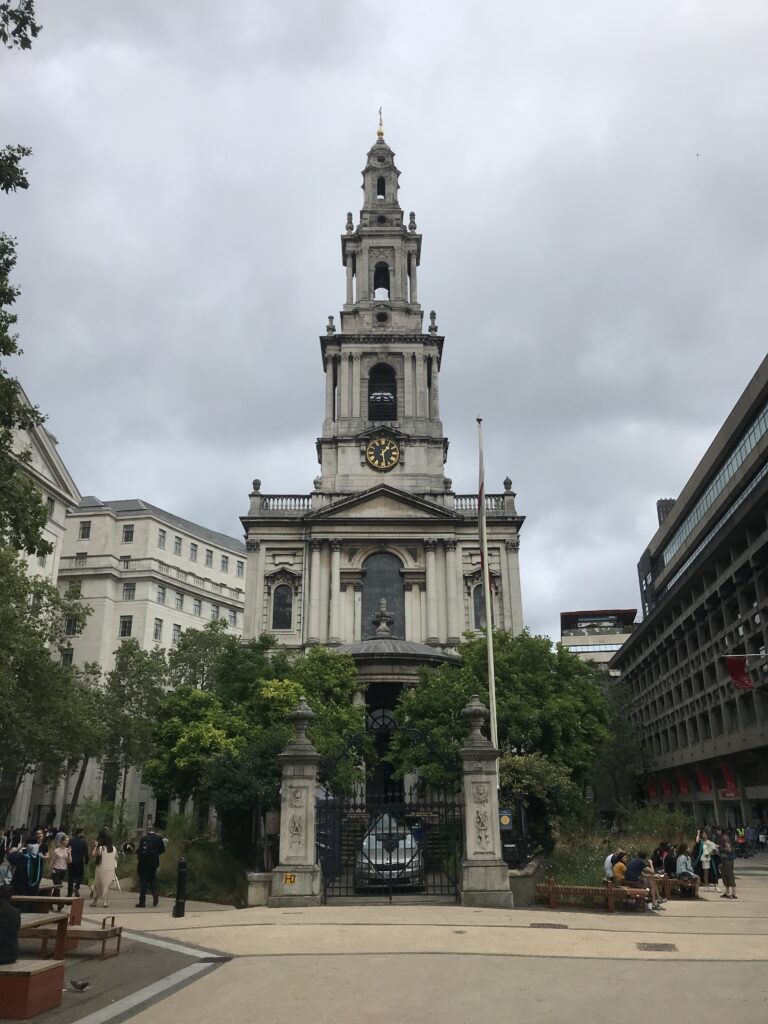
One of the ways in which the city has been vastly improved over the past few years has been the claiming back of roadways into public (i.e. pedestrian) space.
Perhaps the first of these was Ken Livingstone’s reclamation of the road between Trafalgar Square and the National Gallery, turning what had been a traffic island (albeit an historic traffic island) visited only by tourists and pigeons (and a thousand drunk londoners on New Year’s Eve) into an actual public space. It became somewhere one walks across rather than round, and a true centre to London, one where events from opera screenings to Diwali festivals attract large crowds.
One of the latest – and one of the best – is the pedestrianisation in front of Somerset House and King’s College on the Strand.
This had been the east-west road from Fleet Street to Charing Cross, usually packed with traffic (particularly buses). Hats off to Westminster Council for rerouting this road and giving the capital a new public square, one filled (as I sat there this lunchtime) with dozens of people having lunch, chatting to friends or just taking a few minutes to sit and recharge.
However, it will mean the renaming of St Mary’s church. Now enveloped by landscaping and seating, it was previously marooned, entirely surrounded by traffic and known to taxi drivers as “St Mary’s in the way”.
I can’t begin to count the hundreds of times that I’ve gone past it in the 40 years I’ve been living in London, but until the other month I’d never gone in, so inaccessible was it.
Properly called St Mary le Strand, it was started in 1714, one of the new churches recommended by the 1710 ‘New Churches in London and Westminster’ Act (which also gave us Hawksmoor’s magnificent six), and was the first church built by James Gibbs. Shortly afterwards he designed his most famous and influential building, St Martin’s in the Fields on Trafalgar Square, and he was also responsible for Oxford’s circular library, the Radcliffe Camera.
The inside of the church is quite plain – Gibbs had recurring fights with the Church Commissioners over the cost of the works, and they vetoed the planned James Thornhill wall paintings, but glance up at to see the magnificent plasterwork ceiling.


